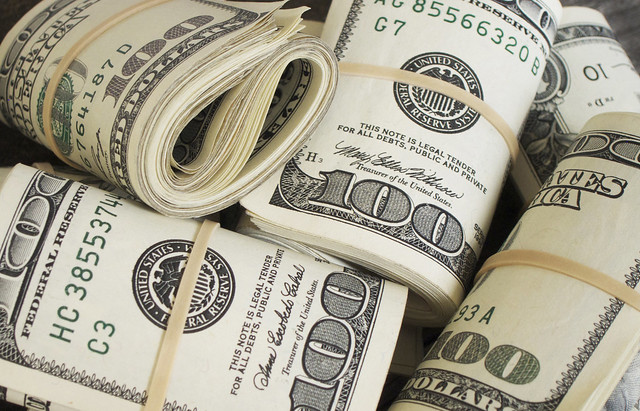Recently, President Biden introduced a $1 Trillion infrastructure plan targeted to improve highways, bridges, and public transportation and to support clean water, as well as clean energy.
He also proposed a $3.5 Trillion 10-year initiative to improve health care, education, family services and environmental programs.
Together, these add up to $450 Billion dollars a year- over and above the “normal” costs of running the Federal government.
At the same time, Biden has pledged not to raise taxes on Americans earning less than $400,000 a year.
So, who’s going to foot the bill?
We all know that our country is divided politically. But the division between the very rich “1%” and everyone else is so vast that if someone were to propose a novel based on the premise of this divide, the manuscript might be rejected as unbelievable.
Here are the facts.
- The population of the U.S. is about 332 Million. There are approximately 128 Million households.
- The infamous 1% is therefore comprised of 1.3 Million households. (1% x 128 Million).
- The average net worth of these households is about $11 Million. They control 32% of the net worth of all American families.
- By way of contrast, the bottom 50% of our population accounts for a mere 2% of total net worth. The Tax Policy Center recently reported that 61% of all American taxpayers paid no tax at all in 2020.
Here are a couple of refinements to the above numbers.
- The top ½ of 1% of American households (1/2 x 1% x 1.3 Million= 650,000 households) have an average net worth of $17 million.
- The top 1/10 of 1% of American households (1/10 x 1% x 1.3 Million = 130,000) have an average net worth of $43 Million. This includes between 600 and 700 Billionaires.
If we assume, for now, that the top ½ of 1% should be expected to collectively come up with $450 Billion a year for 10 years to cover Biden’s proposed spending measures, each of the “lucky” households would have to contribute almost $700,000 a year-over and above what most of us would expect them to pay just to cover “normal” federal budgetary expenses.
Is this reasonable?
I suggest that no substantial benefit would result from raising the top marginal tax rate a few percentage points for households with incomes over $400,000 a year, as President Biden has suggested. As I will explain shortly, many of the “super rich” are able to reduce their taxable incomes to zero, and, whether the tax rate is 40% or 90%, multiplying by zero is… ZERO.
A major tax-system overhaul is needed, and to be effective, I believe it will require some radical out-of-the-box thinking.
President Biden and his advisors will not, in my opinion, be able to rely on input from our top tax lawyers and accountants in the private sector. This is because most, if not all, of these specialists rely on the very wealthy for their incomes.
Moreover, plugging loopholes and introducing new tax rules designed to extract money will not be popular with the wealthy benefactors who contribute to the coffers of our political parties.
Personally, I have no dog in the hunt. I am knocking on the door of my 78th birthday. My career has been devoted to taxation for (literally) the last 50 years in both the U.S. and Canada. I hold CPA designations in both countries. I taught at several major Canadian universities and, for the past 22 years, have been providing courses for Canadian CPAs who are studying to obtain accreditation in the U.S.
So, what I would like to do is present several ideas in this three-part series in the hope that someone who reads these articles and thinks my suggestions have merit has the connections to pass them to the appropriate channels.
Here is my first proposal.
I have already stated that a number of very wealthy Americans pay no tax by reducing their taxable incomes to zero each year. The way they accomplish this, is by not drawing salaries from their businesses and not selling shares or other properties that would trigger capital gains.
Instead, they use their substantial assets as collateral and borrow money to cover their living expenses year after year.
Here is a hypothetical example.
I.M. Smart is a tech guru who founded a start-up business some years ago that grew and prospered and is now listed on the NASDAQ. Mr. Smart’s holdings are now worth in excess of $2 Billion. He does not want to draw a big salary. There are two reasons for this. First, salaries reduce the company’s “earnings per share” and have a negative impact on the share price. Secondly, Mr. Smart hates to split his good fortune with the IRS. His problem, however, is that he “needs” $2 Million a year to cover his lifestyle expenses.
Fortunately he becomes aware of a solution that was discovered many years ago by other mega-wealthy people, Mr. Smart approaches his bankers and asks for a personal loan of $2 Million and pledges some of his shares worth, say, $10 Million as collateral. From the bank’s standpoint, there is virtually no risk in providing the money. Mr. Smart can now spend to his heart’s content. Moreover, he can borrow money in the same way year-after-year. It would probably take several lifetimes before he exhausts his ability to draw against his holdings!
Eventually, Mr. Smart will either sell his company or die. Capital gains and/or estate taxes will become payable and the loans will have to be paid off. Nevertheless, if he can postpone paying taxes for, perhaps, 30 years or more, that’s not a bad deal, is it?
Sadly, President Biden will not be able to count on Mr. Smart to help fund his spending proposals- unless the Internal Revenue Code is amended.
So, what can be done?
The answer is to make all loans in excess of some base amount (to be determined) taxable when they are received, unless the money is clearly used to make investments or is used to acquire or renovate a principal residence or purchase an automobile .
I suggest that dollar limit exemptions should be set for residences and cars. The base exemption should also cover loans for education and medical expenses. This base exemption would be large enough so that only around the top 5% of American households might be affected.
If (taxable) income is later used to repay loans previously taken and taxed, the borrower would get a corresponding deduction at that time- unless the repayment is offset by replacement borrowings.
Let’s assume for example, that 25% of the top ½ of 1% of American households are using loans to avoid taxes on $5 Million each year. As I mentioned towards the top of this article, there are about 650,000 households with an average net worth of $17 Million. So, if 162,500 households are required to cough up, say, $2 Million tax on $5 Million each year, this would bring in about $325 Billion a year!
(Please note: If these people stop taking loans and draw salaries from their enterprises to cover their living expenses, the IRS coffers would still collect the same $ 325 Billion.)
My conclusion is that blocking the “annual loan” loophole by itself would generate a substantial portion of the funds needed over the next 10 years to pay for President Biden’s spending proposals.
In my next installment in this series, I will explain how estate and gift taxes can be totally abolished while overall taxes payable by America’s wealthiest citizens will nevertheless increase!




















